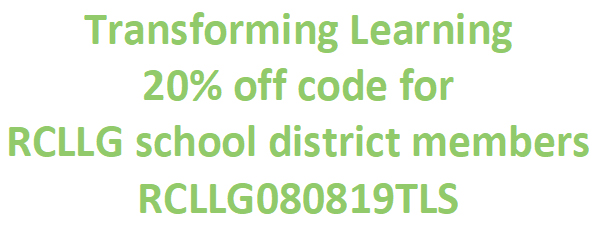This blog post is shared from our 2021 Government IT Symposium Diamond Sponsor, IBM Red Hat. the post is originally written by Mike Camp, Emerging Technology Specialist at Red Hat. Thanks for sharing!
Digital business is here to stay
Organizations around the world are accelerating moves to online digital business as a result of pandemic restrictions, global economic disruptions, and ongoing uncertainty. 97% of enterprises expect to use connected hybrid and multi-cloud infrastructure to support cloud-native applications. 99% of organizations are using or are evaluating the use of containers and microservices to enable future application development activities.
Market dynamics are changing as a result of this digital business transformation. Data about every aspect of business activity and interaction can be captured and analyzed. Applications are being created modularly and updated continuously to stay current. Citizens, employees, and partners can collaborate with agencies and businesses on-line and in real time.
More agencies in state, local, and federal government as well as education are building Information Technology (IT) modernization and digital transformation strategies, and adopting cutting edge technologies as well as utilizing existing IT infrastructure to execute those strategies. A prime example of this movement is containerization, which many agencies are beginning to deploy in their environment to replace aging, expensive virtualization infrastructure.
DevSecOps is key when replacing infrastructure
To enable enterprise IT across agencies and organizations, and ensure the right strategy, tools, partners, people and processes are in place, requires an investment in DevSecOps methodologies and practices. Delivering capabilities with microservices architectures are needed to accelerate agile software development and take advantage of automated continuous integration/continuous delivery (CI/CD) toolchains to create and deploy digital business applications faster than ever. Increasingly, these solutions are being designed as cloud-native applications optimized for highly scalable container infrastructure orchestrated using Kubernetes.
Kubernetes, an open source container orchestration technology, has been widely adopted across the industry and is supported by many on-premises distributions and public cloud container services. Kubernetes automatically manages container service discovery, incorporates load balancing, tracks resource allocation, and scales container deployments based on compute utilization.
Based on an organization or agency’s unique priorities, the best mix of infrastructure and application architectures can be built that will optimize agility, control costs, and maintain security. Moreover, 71% of organizations recognize the need for consistent cross-cloud management and automation to ensure effective application performance and business operations . Modern digital business strategies depend on microservices and cloud-native architectures. Large-scale operations across multiple clouds and clusters pose management challenges beyond what Kubernetes can manage on its own.
Containers are important. So, why are organizations struggling to manage them?
Despite the rapid adoption of containers, many organizations are struggling to manage and secure them effectively. Only 15% of organizations surveyed by IDC have developed, optimized or fully mature strategies for managing and taking full advantage of containers across the application life cycle. Organizations are particularly concerned about the impact on cloud cost management, workload placement decisions, adapting to new automation GitOps strategies built for containers, and maintaining security, compliance, and observability strategies, especially as applications become more distributed and global.
The ability to consistently manage distributed applications built and operated on modern frameworks and technologies like containers, across diverse on-premises and public cloud platforms is crucial to digital business success. The ability to deliver these environments and workloads into production as highly available, secure, high performing enterprise IT services to users, customers, and constituents, requires a comprehensive platform with the tools that address the new challenges and dynamics that they present in order to achieve the gains and return on investment that organizations seek to deliver.
Effective container environment management at scale
Because each container can operate in isolation from another, developers can use containers to modularize development using microservices and work on each microservice individually. Rather than being patched and updated while running, containers are simply terminated, and new updated containers are launched as needed to introduce new functions or to repair performance problems. This allows for the rapid scaling and deployment of updates in a consistent manner across a cluster.
Organizations are rapidly adopting technologies like containers and kubernetes to respond more quickly to the wants and needs of their customers and deliver better business outcomes in a controlled and in alignment with enterprise IT governance requirements. These improved business outcomes are coming in the form of cost savings, better agility and self-service for their users which improves process and speed to market, and in some cases, even stronger security and improved posture when it comes to reducing the risk of vendor lock-in.
The benefits of a multi-cluster architecture
Kubernetes is focused on managing individual clusters, however, it is not designed to control multi-cluster operations or security on its own as an upstream project deployed in a DIY manner without additional tooling and technologies. As a result, as use of containerized applications increases, many enterprises are adopting multi-cluster Kubernetes architectures that allow each cluster to be configured to meet specific local configuration, compliance, and performance requirements as needed in different physical locations, geographies, and clouds.
Multi-cluster architectures allow better alignment of security and operational policies with different application and business needs. This is an emerging technology area that specifically enables policy-based operations and consistent control across multiple Kubernetes clusters, whether they are deployed on premises, in public clouds, or at the edge. Effective multi-cluster Kubernetes management is a priority for organizations that are successfully building out cloud-native, agile DevSecOps programs for business transformation.
Red Hat Advanced Cluster Management for Kubernetes and IBM Cloud Pak® for Multi Cloud Management
For organizations that are struggling to standardize, secure, and scale multi-cluster Kubernetes clusters, Red Hat and IBM are here to help.
Red Hat Advanced Cluster Management provides a single view to manage across multiple platforms and vendors, including Amazon Web Services (AWS), Microsoft Azure, Google Cloud Platform (GCP), bare metal, Red Hat OpenStack® Platform and VMware vSphere. It also provides the hybrid cloud management platform and capabilities that address common challenges faced by administrators and site reliability engineers (SREs) as they work across a range of environments, such as multiple datacenters, private clouds, and public clouds that run Kubernetes clusters, including your remote edge sites.
IBM’s Cloud Pak® for Multi-Cloud Management console and CLI tools provides the ability to view information about your clusters, add or change cluster labels, and view metering usage data. Organizations leveraging either the Red Hat Advanced Cluster Management UI or the IBM Cloud Pak® for Multi-cloud Management console are able to create applications and application resources, which are automatically propagated to Red Hat Advanced Cluster Management running on Red Hat OpenShift.
The benefits of partnering with Red Hat and IBM for creating and managing your applications include:
- Unified multi-cluster management: Organizations can create, update, and delete Kubernetes clusters across multiple private and public clouds. Red Hat Advanced Cluster Management is able to search, find, and modify any Kubernetes resource across the entire domain and quickly troubleshoot and resolve issues across federated domains.
- Policy-based governance, risk, and compliance: Red Hat Advanced Cluster Management allows organizations to set and enforce policies for security, applications, and infrastructure in order to visualize detailed auditing on configuration of apps and clusters and gain visibility into compliance posture based on defined standards.
- Advanced application life-cycle management: By defining and deploying applications across clusters based on policy, IT organizations can view service endpoints and pods associated with application topology and dependencies. In addition, organizations can automatically deploy applications to specific clusters based on channel and subscription definitions and automate day 2 configurations such as networking and databases via integrations with Red Hat Ansible.
- Multi-cluster observability for health and optimization: Red Hat Advanced Cluster Management can provide organizations with an overview of multi-cluster health and optimization, including the ability to store long-term data as well as easily sort, filter, and do a deep scan of individual clusters at the aggregated multicluster level. Organizations can also gain an aggregated view of cluster metrics and supporting troubleshooting including integrations with Grafana dashboards.
Moving forward with modern applications
Maintaining consistent security, performance, and control across multiple Kubernetes platforms will be critical to ensuring business resiliency and agility in the age of modern cloud-native applications and DevOps-driven software innovation. Organizations that are exploring or deploying containers at any level of enterprise scale will need to quickly grapple with the challenges of multi-cluster management and invest in appropriate tools, skills, and process updates in order to ensure application performance.
Learn more about how IBM and Red Hat can enable the public sector your hybrid, multi-cloud journey!














